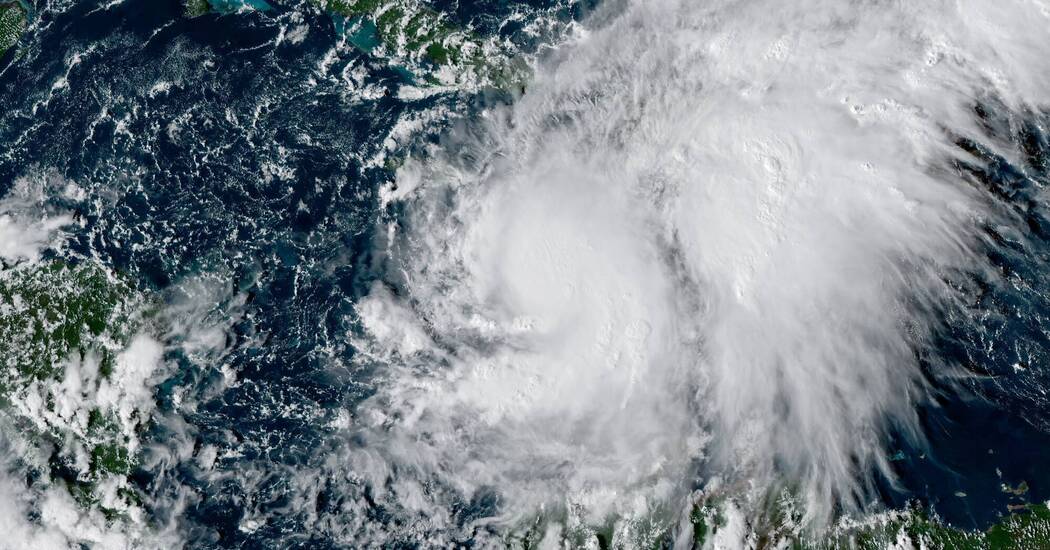While many tropical storms move across the Atlantic Ocean at a steady pace, Tropical Storm Melissa is lumbering over the warm waters of the western Caribbean, coming to a near standstill just southeast of Jamaica as it collects moisture and gains strength.
The stalled storm was dumping rain over Haiti on Friday and has already killed at least three people in the country. It’s expected to drift west slowly in the coming days, likely intensifying into a hurricane on Saturday and continuing to unleash destructive winds and torrential rain over Haiti and also the Dominican Republic, Jamaica and Cuba that will bring a risk of life-threatening, catastrophic flash flooding and landslides.
“The slower a storm goes, the more time it has to dump a lot of rain in one place,” said Stephen Mullens, a professor at the University of Florida.
Tropical cyclones typically move across the Caribbean at an average speed of about 10 to 12 miles per hour, according to Phil Klotzbach, a senior research scientist at the Department of Atmospheric Science at Colorado State University.
On Friday afternoon, the National Hurricane Center said the storm’s speed was 2 m.p.h.
“It was moving at maybe 10 m.p.h., and then in the last couple days it basically ground to a halt,” Mr. Klotzbach said.
He explained the system is sandwiched between two separate areas of high pressure that caused the prevailing winds, which typically push storms along, to slacken.
“There’s a pebble in the stream, but the stream is stagnant,” he said. “There’s nothing pushing the storm along,” he added.
Tropical storms that stall can lead to prolonged rainfall over a confined area, increasing the chances for hazardous flooding. Imagine moving a garden hose quickly across a lawn so all areas receive some water that gets absorbed. But if you hold the hose over one spot for a long time, a pool of water forms.
The situation in Haiti and Jamaica is exacerbated by mountains terrain that squeeze moisture out of the storm and can intensify rainfall rates. Forecasters predicted 20 or even 30 inches of rain in some isolated areas. Mudslides are possible on the mountainsides.
Prolonged winds are also a problem as they batter and weaken structures.
Some of the most destructive and deadly storms in history are ones that have stalled. Hurricane Dorian lingered over the Bahamas in 2019, pounding and soaking the islands from a near standstill. The year before, Hurricane Florence drenched the North Carolina coast for more than two days, and when Hurricane Harvey stalled over southeast Texas for days in 2017, it dumped up to 60 inches of rain in some spots.
Research has found that the average speed of tropical cyclones, which includes hurricanes, has slowed since the middle of the 20th century, and climate change has likely played a role.
Melissa isn’t expected to stay on its slow track forever. After its extraordinary rain dump over the weekend, the storm is forecast to continue its westward march, likely starting to pick up some speed as it passes over or near Jamaica on Tuesday and Cuba on Wednesday. Taking a northeast turn, it could barrel over the Bahamas toward the end of next week.
Amy Graff is a Times reporter covering weather, wildfires and earthquakes.
The post What Happens When a Storm Like Melissa Doesn’t Move appeared first on New York Times.




